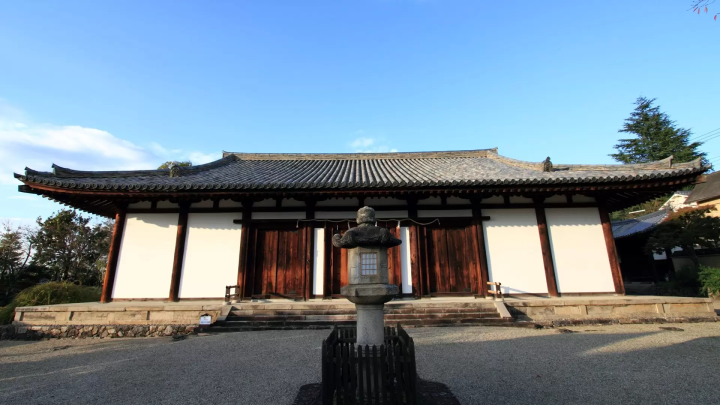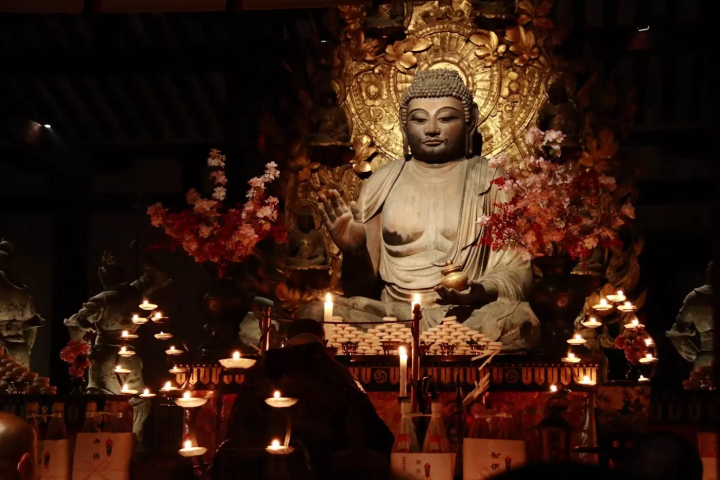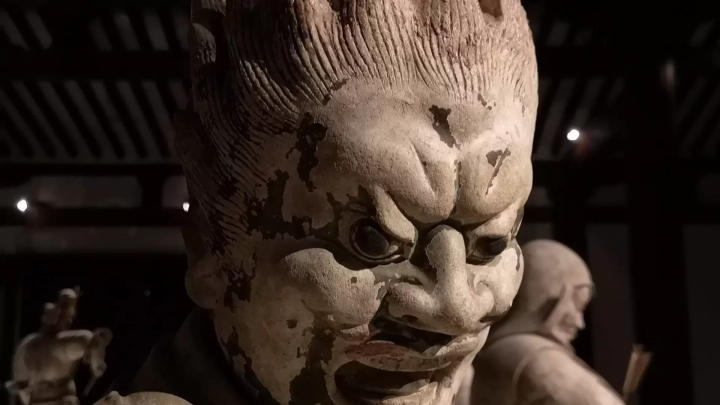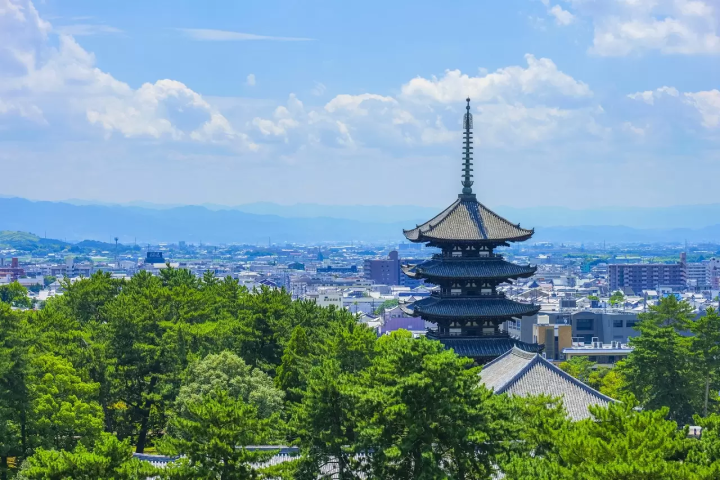This is a rare enshrinement where twelve divine generals surround Yakushi Nyorai as if to protect him. Shinyakushiji Temple in Nara, where you can worship 360°

Emperor Shomu, who built the Great Buddha of Nara at Todaiji Temple. Shinyakushi-ji Temple was built by Empress Komyo, the Empress of Japan, in hopes that Emperor Shomu would recover from his illness. Few buildings remain from the time of its founding, and the valuable main hall has been designated as a ``national treasure.'' The seated statue of Yakushi Nyorai, also a national treasure, and the standing statues of the Twelve Generals enshrined surrounding it are must-sees.
Shinyakushiji Temple was built in 747 AD to pray for Emperor Shomu's recovery from illness. Emperor Shomu was the emperor who built the Great Buddha of Nara (Todaiji Temple Bronze Seated Statue of Rhosanabutsu), but he fell ill during the construction process. Therefore, memorial services were held in various places to cure the emperor's illness, and this led to the construction of Shinyakushi-ji Temple in the area by his wife, Empress Komyo. In 751, a memorial service for Emperor Shomu was held at Shinyakushiji Temple, and the Great Buddha in Nara was successfully completed. When Shinyakushiji was first founded, it was a large temple with seven halls, including the main hall and both east and west pagodas, built on a site approximately 440 meters square, but many of the halls were burnt down or collapsed due to a lightning strike in 780 and a typhoon in 962. However, it was rebuilt as the current temple around the 13th century. The current main hall has been designated as a national treasure, as it is one of the few remaining valuable buildings from its founding in the 8th century, having escaped damage from lightning and typhoons. Inside the main hall, there are a 1,300-year-old seated statue of Yakushi Nyorai and a standing statue of the Twelve Generals, both national treasures.

Wooden Seated Statue of Yakushi Nyorai: National Treasure (Artwork) Date of Registration: 1951.06.09
The wooden seated statue of Yakushi Nyorai holds a medicine pot (yakko) containing elixirs that can cure all illnesses, including physical and mental illnesses, in its left hand, and is the principal image of Shinyakushiji Temple, where it is worshiped as a Buddha that cures illnesses.It was built in the 9th century. It is said to have been produced around the beginning. The head and body were carved from a single Kaya tree, and because the core was used, the original tree is thought to be a huge tree with a diameter two to three times the width of the body. The tree is said to be over 1,000 years old, and the Buddha statue that was built about 1,100 years ago can be said to be here now, over 2,000 years after the tree was created. The ``halo'' behind the Buddha statue, which represents the light emitted from the Buddha's body, is created using a Western design in which acanthus, a plant originating from the Silk Road, stretches upwards with its large leaves fluttering and flowers blooming. The six small Buddha statues, along with the principal image, represent the seven Buddhas known as the "Seven Buddhas of Medicine," which were enshrined at the time of the building to pray for Emperor Shomu's recovery from his illness. With its gentle yet powerful appearance and overwhelming sense of volume, it is considered one of the best Buddhist sculptures in Japan and has been designated as a national treasure.

Molded standing statues of the Twelve Divine Generals (excluding the statue of General Miyapira (in temple legend, the statue of General Hairi): National Treasure (work of art) Registration date: 1953.03.31
During his training period, Yakushi Nyorai made twelve vows out of his desire to save people. The ``Twelve Divine Generals'' are the deifications of these twelve vows. He is a general with 7,000 subordinates, or 84,000 in total, and protects the 12 directions as a follower of Yakushi Nyorai. The standing statue of the Twelve Generals was created in the 8th century and is the oldest and largest statue of the Twelve Generals, and is designated as a national treasure as a masterpiece of plastic sculpture. A plastic statue is made by wrapping a rope around a wooden frame and applying clay mixed with straw to create a rough shape, then coating it with clay mixed with paper and mica.The eyes are made of colored blown glass balls. It is expressed. The surface is painted in vivid three-dimensional colors, and some of the original colors still remain today. Among the statues of the twelve divine generals, each of which is unique and dynamic, the one that stands out in anger, with his hair on end, is particularly popular, as it is featured on a stamp. It can be said that there is no other shrine or temple where you can see twelve national treasures, including the seated statue of Yakushi Nyorai, up close.

Cultural property information
Visiting hours
9:00-17:00
Regular holiday
none
Fee
Individuals: 600 yen for adults, 350 yen for high school and junior high school students, 150 yen for elementary school students Groups: 550 yen for adults, 300 yen for high school and junior high school students, 120 yen for elementary school students
Written by
Western Japan Wide Area Tourism Collaboration Cultural Properties Utilization Nara Promotion Council
Nara
By using IT to disseminate information about Nara's tourism, food, culture, and other resources, we will create innovation and contribute to the sustainable economic development of the region. ・Support for attracting inbound tourism ・Issuance project planning and operational support ・Regional revitalization support
The contents on this page may partially contain automatic translation.
































![[Yamanashi/ Hokuto City] 4 Hot New Spots Opening in 2026](https://resources.matcha-jp.com/resize/720x2000/2025/12/12-252747.webp)

![[Reopening in March 2026] Ikoma Sanjo Amusement Park Park, 45 minutes from Osaka , with free admission](https://resources.matcha-jp.com/resize/720x2000/2024/08/28-194409.webp)
![[Gunma] 5 recommended gourmet foods at Kawaba Denen Plaza Roadside Station!](https://resources.matcha-jp.com/resize/720x2000/2025/02/26-225970.webp)
![[Kanazawa] Enjoy the world of gold leaf to the fullest in the city with the highest production volume in Japan](https://resources.matcha-jp.com/resize/720x2000/2025/11/12-249564.webp)